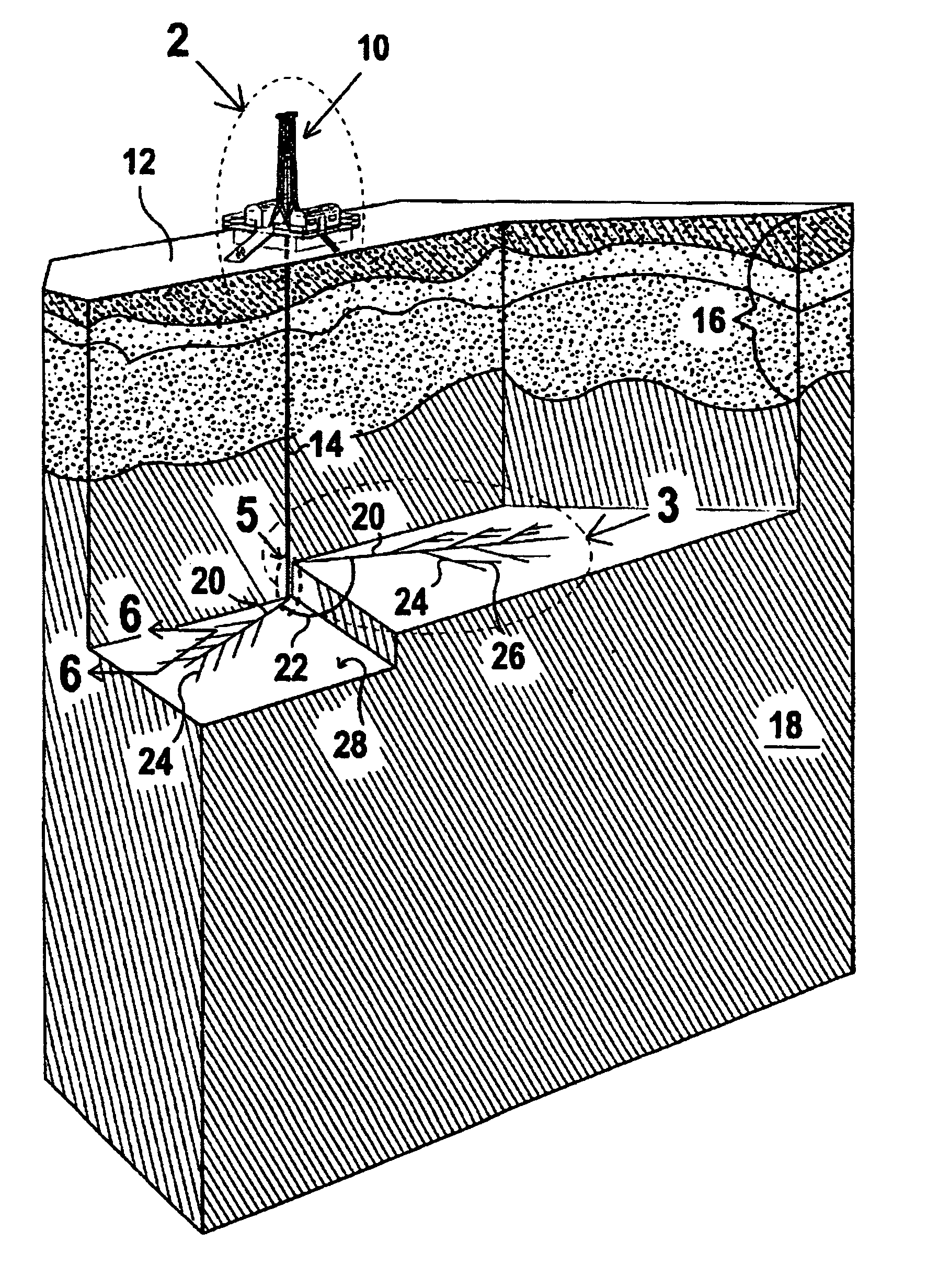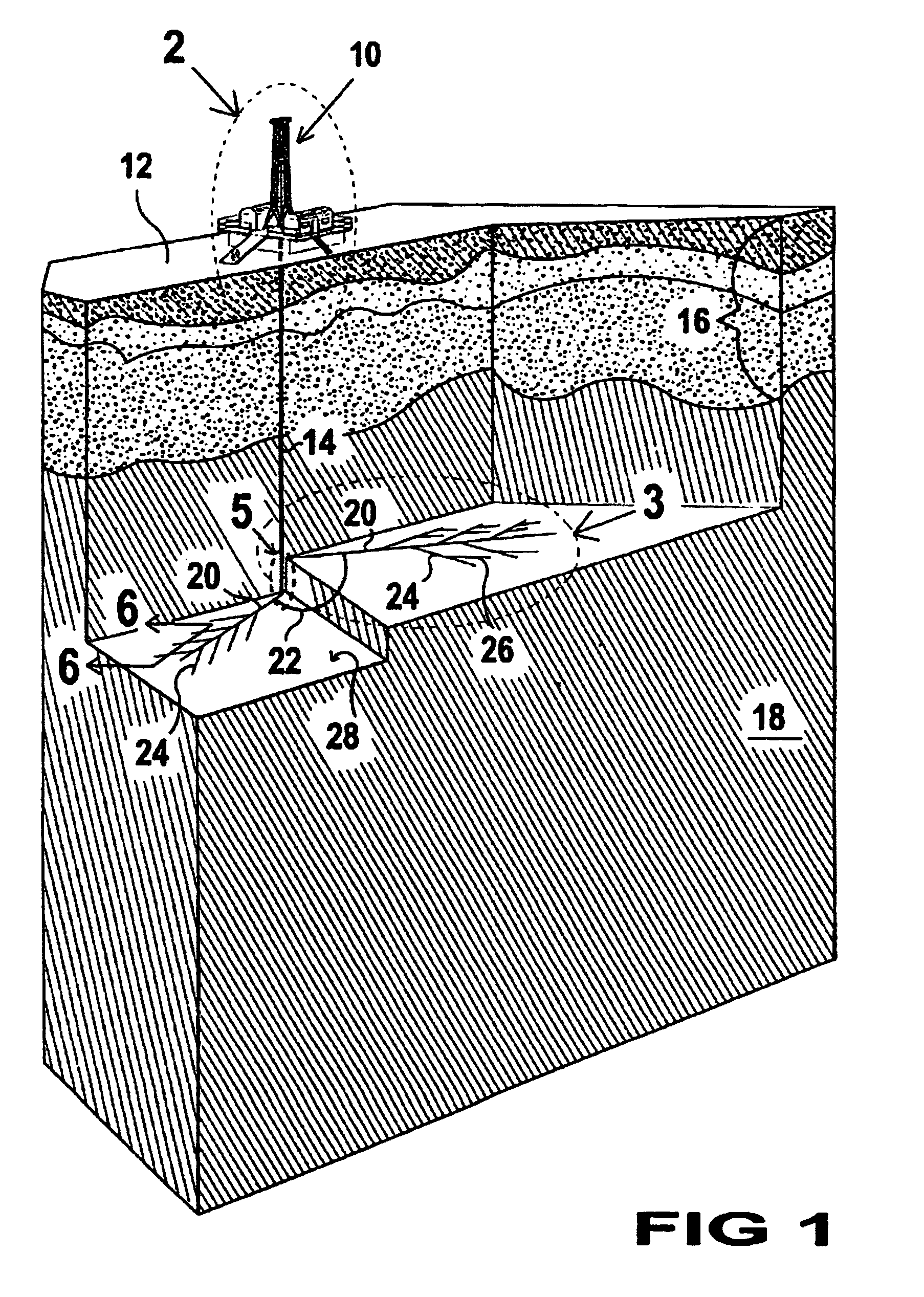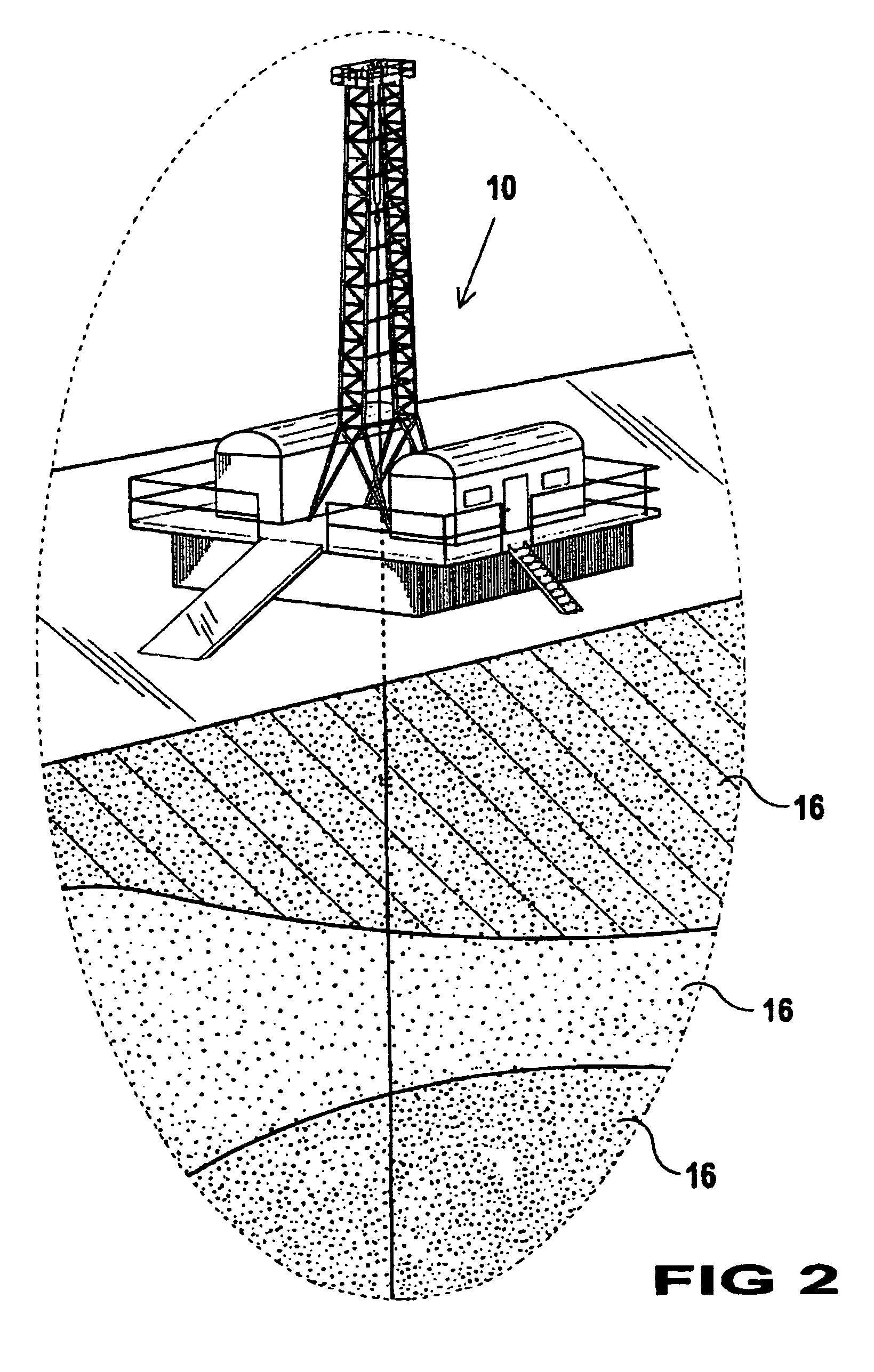Method for temporary or permanent disposal of nuclear waste
a technology of nuclear waste and temporary or permanent disposal, which is applied in the direction of solid waste disposal, radioactive decontamination, nuclear engineering, etc., can solve the problems of destroying life in the surrounding area, costing billions of dollars, and system costing many billions of dollars, and achieves the effect of prolonging safety
- Summary
- Abstract
- Description
- Claims
- Application Information
AI Technical Summary
Benefits of technology
Problems solved by technology
Method used
Image
Examples
Embodiment Construction
[0038]The present invention can be more fully understood by reading the following detailed description of some of the embodiments, with reference made to the accompanying drawings.
[0039]FIG. 1 shows a preferred embodiment of the equipment used and the results obtained when practicing the method of the present invention. A drilling rig 10 is positioned on an isolated surface 12 of the earth and is used to create a vertical wellbore 14 which will extend vertically into the earth's surface. The vertical distance is contemplated to be in the range of 5,000 feet to 25,000 feet. The vertical wellbore 14 extends through a plurality of layers of the earth's surface 16 and into a layer of rock 18 herein called the repository. The repository layer of rock 18 is a specially selected rock formation deep enough below the earth's surface to prevent radiation which may leak from reaching the surface. The selected rock formations have existed for billions of years as is evidenced by the chronologic...
PUM
 Login to View More
Login to View More Abstract
Description
Claims
Application Information
 Login to View More
Login to View More - R&D
- Intellectual Property
- Life Sciences
- Materials
- Tech Scout
- Unparalleled Data Quality
- Higher Quality Content
- 60% Fewer Hallucinations
Browse by: Latest US Patents, China's latest patents, Technical Efficacy Thesaurus, Application Domain, Technology Topic, Popular Technical Reports.
© 2025 PatSnap. All rights reserved.Legal|Privacy policy|Modern Slavery Act Transparency Statement|Sitemap|About US| Contact US: help@patsnap.com



